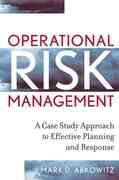Question
I need help answering the following questions: The last person didn't answer some of the questions and the explanations of the answers didn't make much
I need help answering the following questions:
The last person didn't answer some of the questions and the explanations of the answers didn't make much sense and were very confusing to read.
Question 1:
As part of its operations, Ferguson's plumbing has bought and sold several non depreciable assets. The purchase and sale prices for these assets are contained in the following table. Assuming that Ferguson's pays a 40% capital gains tax, complete the table by filling in the last two columns.
Asset | Sale price | Purchase Price | Capital Gain | Tax
A $3,400 $3,000
B $12,000 $12,000
C $80,000 $62,000
D $45,000 $41,000
E $18,000 $16,500
Question 2:
Josh Smith has compiled some of his personal financial data to determine his liquidity position. The data are as follows:
Account Amount
Cash $3,200
Marketable Securities $1,000
Checking account $800
Credit card payables $1,200
Short-term notes payable $900
A. Calculate Josh's liquidity ratio.
B. Several of Josh's friends have told him they have liquidity rations of 1.8. How would you analyze Josh's liquidity ratio compared to his friends?
Question 3:
Wilkins Manufacturing has sales of $3.5 millions and a gross profit margin of 44%. Its end-of-quarter inventories are:
Quarter Inventory
1 $410,000
2 $790,000
3 $1,207,000
4 $201,000
A. Find the average quarterly inventory and use it to calculate the firm's inventory turnover and the average age of inventory. (Assume a 365-day year.)
B. Assuming that the company is in an industry with an average inventory turnover of 1.4, how would you evaluate the activity of Wilkins' inventory?
Question 4:
An evaluation of the books of Blair Supply gives the end-of-year accounts receivable balance, which is believed to consist of amounts originating in the months indicated. The company had annual sales of $2.40 million. The firm extends 30-day credit terms.
Months of Amounts receivable origin
July $3,945
August $2,404
September $34,010
October $15,050
November $51,980
December $192,965
Year-End A/R $29,990
A. Use the year-end total to evaluate the firm's collection system.
B. If 70% of the firm's sales occur between July and December, would this affect the validity of your conclusion in part a? Explain.
Question 5:
On March 20, 2015, Norton Systems acquired two new assets. Asset A was research equipment costing $17,000 and having a 30-year recovery period. Asset B was duplicating equipment having an installed cost of $45,000 and a 5-year recovery period. Using the MACRS depreciation percentages (below), prepare a depreciation schedule for each of these assets.
Rounded Depreciation Percentages by Recovery Year Using MACRS for Property Classes
Recovery year | 3 years | 5 years | 7 years | 10 years
1 33% 20% 14% 10%
2 45% 32% 25% 18%
3 15% 19% 18% 14%
4 7% 12% 12% 12%
5 12% 9% 9%
6 5% 9% 8%
7 9% 7%
8 4% 6%
9 6%
10 6%
11 4%
Total 100% 100% 100% 100%
Question 6:
You have $100 to invest. If you can earn 12% interest, about how long does it take for your $100 investment to grow to $200? Suppose that the interest rate is half that, at 6%.
At half the interest rate, does it take twice as long to double your money? Why or why not? How long does it take?
Question 7:
Jack and Jill have just had their first child. If college is expected to cost $170,000 per year in 18 years, how much should the couple begin depositing annually at the end of each year to accumulate enough funds to pay the first year's tuition at the beginning of year 19 (when the child starts college.) Assume that they can earn an annual rate of return of 8% on their investment.
Question 8:
Jim Nance has offered an investment that will pay him $460 three years from today.
A. If his opportunity cost is 5% compounded annually, what value should he place on this opportunity today?
B. What is the most he should pay to purchase this payment today?
Question 9:
An insurance agent is trying to sell you an immediate-retirement annuity, which for a single amount paid today will provide you with $11,200 at the end of each year for the next 35 years. You currently earn 9% on low-risk investments comparable to the retirement annuity.
Ignoring taxes, what is the most you would pay for this annuity?
Question 10:
You put $10,000, in an account earning 5%. After 3 years, you make another deposit into the same account. Four years later (that is 7 years after your original $10,000 deposit), the account balance is $20,000.
What was the amount of the deposit you made at the end of year 3?
Step by Step Solution
There are 3 Steps involved in it
Step: 1

Get Instant Access to Expert-Tailored Solutions
See step-by-step solutions with expert insights and AI powered tools for academic success
Step: 2

Step: 3

Ace Your Homework with AI
Get the answers you need in no time with our AI-driven, step-by-step assistance
Get Started


